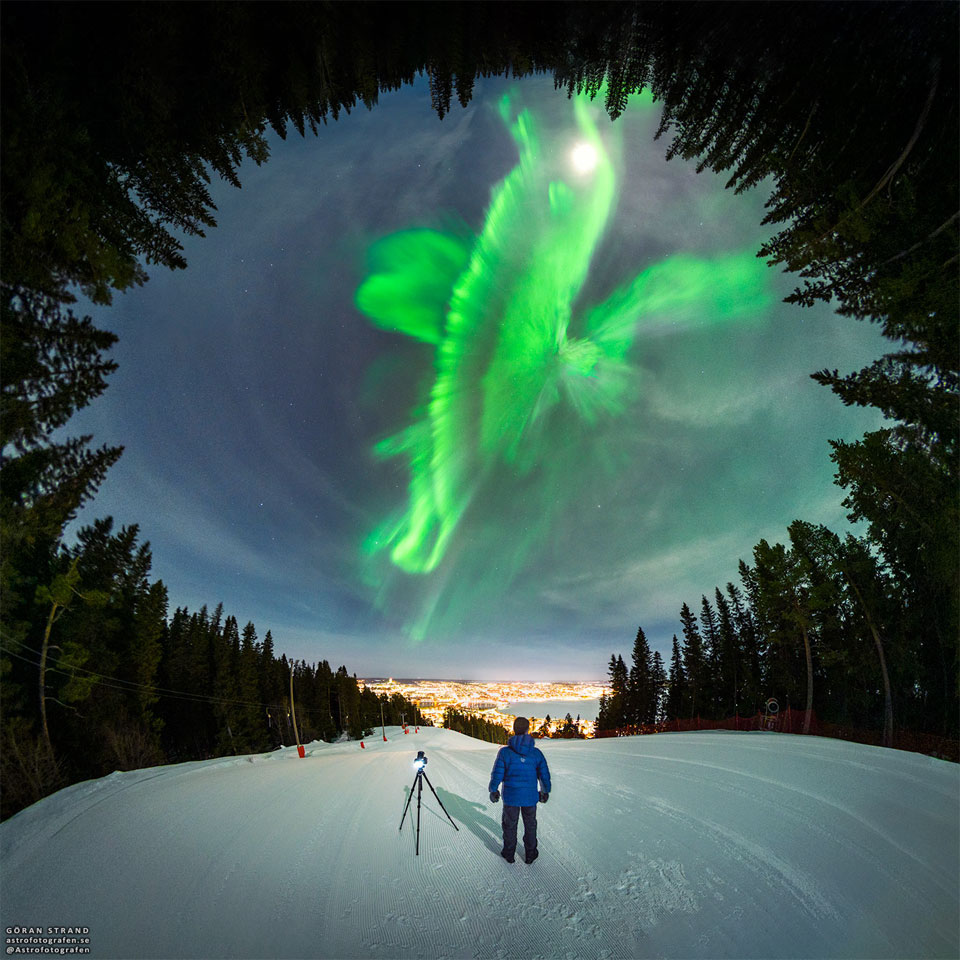2022年3月22日
A Whale of an Aurora over Swedish Forest
Image Credit & Copyright: Göran Strand
Explanation: What’s that in the sky? An aurora. A large coronal mass ejection occurred on our Sun earlier this month, throwing a cloud of fast-moving electrons, protons, and ions toward the Earth. Part of this cloud impacted our Earth’s magnetosphere and, bolstered by a sudden gap, resulted in spectacular auroras being seen at some high northern latitudes. Featured here is a particularly photogenic auroral corona captured above a forest in Sweden from a scenic perch overlooking the city of Östersund. To some, this shimmering green glow of recombining atmospheric oxygen might appear like a large whale, but feel free to share what it looks like to you. The unusually quiet Sun of the past few years has now passed. As our Sun now approaches a solar maximum in its 11-year solar magnetic cycle, dramatic auroras like this are sure to continue.
Open Science: Browse 2,700+ codes in the Astrophysics Source Code Library
Tomorrow’s picture: big bubble
瑞典森林上空的鲸形极光
影像提供与版权: Göran Strand
说明: 天空发生了什么事?有极光。在这个月稍早,我们的太阳发生日冕物质抛射,把成团的高速电子、质子和离子洒向地球。部分的这团物质后来撞到地球的磁层,并在鲜明间隙的推波助澜下,为许多高纬度地区带来非常壮观的极光冕。上面这幅主题影像,呈现从瑞典一处俯视厄斯特松德市的景点,所见到悬在瑞典森林上空分外美丽的极光冕。有些人会认为这团因电离大气氧原子与电子复合所产生的摇曳泛绿光影,形似庞大的鲸鱼,不过仍请尽管分享你的见解。持续数年极为安静的太阳极小期已然过去。在11年的活动磁周期里,太阳逐渐接近活动极大期,所以像上面这种戏剧性的极光必然会越来越常见。
开放科学: 浏览天体物理学源代码库中的2,700多个代码
明日的图片: big bubble







